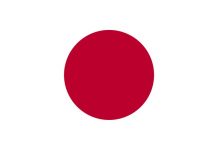| Sabom: | “Teacher” or “instructor.” | |
| Sai: | A pronged truncheon about fifteen to twenty inches long, used as a defensive instrument against various weapons such as the sword. It was developed from an Okinawan farming tool. | |
| Sam: | The traditional uniform of kung fu. | |
| Sambo: | Modern Russian Grappling Art | |
| Samurai: | The swordsmen of feudal Japan who were impeccably at a wide variety of martial arts practices, particularly the sword, and served and lord and fief. Masterless samurai were known as “ronin.” | |
| Sandan | 3rd degree black belt in traditional Japanese styles. | |
| Sangdan: | “Upper” or “upper level.” A directional term used in Korean martial arts. | |
| Sankukai: | A style of karate based on a combination of other systems, with an emphasis on escaping techniques and aikido-like defenses. | |
| Sappo: | A method of attacking vital points of the body in order to cause a coma or death. | |
| Sasae-tsurikomi-ashi: | Propping drawing ankle. Judo foot technique. | |
| Savate: | French hand and foot fighting. A method of fighting to the knockout, once popular with the aristocracy of France. | |
| Saya: | The scabbard of a samurai sword. | |
| Schichidan | 7th degree black belt in traditional Japanese styles. | |
| Seifukujitsu: | Restoration massage, herbology, chiropractic and bonesetting techniques. | |
| Seika tanden: | Lower abdomen. | |
| Seiken: | Forefist. | |
| Seishin: | “Mind,” “soul,” or “spirit.” A state of mind reached after a period of ascetic living which creates the conviction that any difficulty encountered can be adequately responded to. It can be reached though training in a martial art. | |
| Seishin-o-choetsu | A state of mind which is cultivated by the martial artist of indifference to life and death. It depends on the ability to sacrifice oneself for the greater good. | |
| Seito: | “Pupil” or “student.” | |
| Seiza: | “Correct sitting.” A full kneeling position used in many martial arts when performing the ceremonial bow or receiving formal instruction. | |
| Sempai: | “Senior.” Usually denotes any senior by age, rank, position or social standing. | |
| Sen i: | “Fighting will” or “fighting spirit.” | |
| Sensei: | “Guide” Sensei, sen (before) and sei (life), is someone who can guide you based on what they have learned “before in life”, utilizing their past experience. From a martial stand point, they can guide your training based on their previous training. Sensei is often translated as teacher, but the concept is of one guiding another, pushing one forward in their training. | |
| Seoi-nage: | shoulder (back carry) throw, judo hand technique. | |
| Seoi-otoshi: | Shoulder (back carry) drop. Judo hand technique. | |
| Seppa: | The washers above and below the tsuba of a samurai sword. | |
| Shaolin: | “Young forest” or “small forest.” A method of kung fu based on eight postures and five animal forms: dragon, snake, tiger, crane and leopard. | |
| Shejak: | Begin. | |
| Shiai: | A competitive match between Japanese martial artists. | |
| Shiatsu | Japanese term for acupressure. Commonly known to Westerners as a type of massage. | |
| Shibum: | Demonstration. | |
| Shihan: | Master teacher. | |
| Shihap: | A bout or match. | |
| Shikko: | “Knee walking.” A method of moving forward while keeping one knee constantly on the ground. Knee walking was originally a polite way of moving in a house, especially before a lord. | |
| Shime: | Choke. | |
| Shime-waza: | Strangling techniques. | |
| Shimoseki: | “Lower seat.” In a traditional Japanese dojo, the area where students line up and face their instructor(s). Also known as “shimoza.” | |
| Shinai: | A fencing practice sword, made of bamboo strips, and used in the practice of kendo. | |
| Shinken: | “Real sword.” An actual life or death encounter. | |
| Shintai: | “Stopped mind.” A condition in which one remains exclusively defensive. | |
| Shisei: | “Posture” or “stance.” | |
| Shitahara: | Lower abdomen. | |
| Shito ryu: | A style of karate founded by Kenwa Mabuni. Shito ryu is one of the four major Japanese karate systems. | |
| Shizentai: | “Natural position.” An encompassing term for numerous karate stances in which the body remains relaxed but alert. | |
| Shodan | 1st degree black belt in traditional Japanese styles. | |
| Shomen: | “Front” or “forward.” Often refers to the front wall of a dojo. | |
| Shorin-ryu: | “Pine forest style”. Pine forest is is the name of a Chinese temple where kempo is taught. | |
| Shoshinsha: | “Novice” or “beginner.” Any unranked Japanese martial artist. | |
| Shotei: | Palm heel. | |
| Shotokan: | A popular Japanese karate system founded by Gichin Funakoshi and influenced directly by the Okinawan style of Shuri-te. | |
| Shuai chiao: | Along with chin na, this form of Chinese wrestling possibly influenced the formation of Japanese jujutsu. | |
| Shubaku: | A system of empty-hand combat similar to jujutsu which is considered the forerunner of judo. | |
| Shuko: | A type of feudal age brass knuckle used by the ninja. Besides the small metal plate that slipped over the knuckles, the shuko had spikes extending from the palm so an enemy’s face could be raked. It was also useful for gripping when climbing walls. | |
| Shuriken: | Bladed instruments commonly used as throwing weapons by the ninja. | |
| Shuri te: | One of the three original Okinawan karate schools, which derived its name from the city where it originated. | |
| Shushin: | The chief referee in a judo contest or a Japanese-style karate match. | |
| Shuto: | “Knife hand” or “sword hand.” Knife hand counter. | |
| Sidai: | Junior kung fu brother (i.e. one who started after you no matter how old). | |
| Si bok: | “Older uncle.” A title given to a senior ranking instructor in some styles of kung fu. | |
| Sifu: | “Teacher” or “instructor.” | |
| Sigung: | A Sifu’s instructor, sifu’s sifu. | |
| Sijo: | Founder of a system, possibly the sigung’s sifu. | |
| Silat: | See “pentjak.” | |
| Simsa: | Test. | |
| Sode-tsurikomi-goshi: | sleeve lifting pulling hip, judo hip technique | |
| Sogi: | Stance or position. | |
| Sojutsu: | “Art of the spear.” An armed combative practiced by Japanese feudal warriors who used many types and styles of spears. | |
| Soke: | A Japanese term that means “the head family (house). (More Info) | |
| Sokodo: | Speed. | |
| Sokim: | “Fake” or “feint.” | |
| Sokuto: | Foot edge or knife foot. | |
| Sondabak: | Palm. | |
| Sondung: | Backhand. | |
| Sonkal: | Knife hand. | |
| Sooryon: | Training. | |
| Soto: | “Outside,” “outer,” or “exterior.” | |
| Sparring: | A form of martial arts training in which two opponents face one another and simulate actual combat. | |
| Staff: | See “bo.” | |
| Subak: | A native Korean fighting system that enjoyed its widest popularity during the reign of King Uijong (A.D. 1147 – 1170). | |
| Sudo: | Knife hand. | |
| Suki: | “Opening.” A gap in an opponent’s defense or technique. Loss of concentration or “disturbed feeling” leaving one open for attack. | |
| Sukui-nage: | Scooping throw. Judo hand technique. | |
| Sumi-otoshi: | Corner drop. Judo hand technique. | |
| Sumo: | A basic Japanese form of grappling in which the participants are of gigantic proportions. Victory is either achieved by forcing the opponent out of the ring, or by forcing him to touch the floor within the ring with any part of his body above the knee. | |
| Sumotori: | Sumo wrestlers. | |
| Sutemi: | Is the warriors awareness of his need for self-sacrifice, even to the death. |






